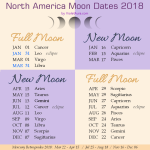The I Naibi di Giovanni Vacchetta Tarot is a reproduction of an uncolored 78-card Tarot deck originally published in 1893. As of today in 2015 there are 3 different reproduction versions available on the market for this Tarot, all colored differently. It is also nicknamed “The Vacchetta Tarot.” All available known versions are listed in this article.
One of the accessible versions of the Naibi di Giovanni Vacchetta Tarot is a numbered limited edition of only 1500 prints available published in 2001. The version is still sold by the publisher in Italy and is still reasonably priced for its age since publication and limited availability. This version is also known as the Il Meneghello (publisher) or Osvaldo Menegazzi (artist) hand-colored version.
Unlike other published versions of this deck, this edition does not come with any paperwork that explains the card meanings or translates the card names to English. If you are familiar with French or Italian Marseilles and Etteilla decks, this will not be a problem. Otherwise you will need to do some research on the history and meaning of the cards which is quite different from the popular modern Rider-Waite version, designed and authored by Arthur Waite.
These photos come from the limited edition deck I received from Italy:

The wax seal on the box (left) and numbered authentication card (center). The card back of the deck is seen at the top of the photo.
This Tarot deck is printed on a heavy paperboard (or ultra thin cardboard-like) cardstock similar in thickness to a postcard, fine greeting card or event announcement. The quality of the cardstock however is as if the card paper was handcrafted. I cannot confirm if it is the case but it is a specialty paper. The cardback is a “standard” reversible Marseilles style; intended white with patterns of dotted circles.
These cards are matte with no finish. (If your hands are damp and you touch the cards, they will soak liquid like a napkin.) The cardstock is also quite flexible and subject to creasing if you are not careful. The cards need to be mindfully handled with care and ease and kept away from moisture.
The “raw” finish of these cards feels lovely, and at the same time difficult to handle. The cards catch friction with one another quite easily. The only safe way to shuffle a collector’s deck like this is to cut the cards into several “packs” (smaller sized stacks) and then consolidate them in a random order repeatedly. There is no way I wanted to even try and shuffle the cards hand-over-hand or the whole lot of them would end up bent and creased from repeated collisions.
Despite the drawbacks of needing to handle this Tarot delicately to maintain its like-new condition, I feel that the value and asking price is beyond reasonable for how much I enjoy this Tarot deck and I wish I had bought two of them!

Early cards of the Major Arcana with Justice (La Giustizia) shown as number VIII.
I notice in particular that the Emperor in this deck looks so similar to the King of Wands in a Rider Waite deck. This deck’s actual King of Wands (Re di Bastone) shown later in the photos is its own unique artwork. The man on the Chariot (Carriage?) card (Il Carro) seems to be wearing armor. And instead of steering this vehicle from the front as it is shown in more modern decks, this one seems to be a passenger riding on the back.

Middle section of Major Arcana cards. Strength (La Forza) is numbered XI.

Later Major Arcana cards.
The artwork and colorization of the last five Major Arcana cards in this deck are strikingly beautiful. When I first learned of this deck, I am not sure which card(s) caught my attention enough for me to investigate them further but I would not doubt it had to be one of these.

Example of pip cards from the Suit of Cups (Coppe) with Minor Court Cards (bottom). The deck’s cardback shows on the left.

Example of pip cards from the Suit of Wands/Batons/Staves (Bastoni) and Minor Court cards (bottom).

Example of pip cards from the Suit of Pentacles/Discs/Coins (Denari) and Minor Court Cards (bottom).

Examples of pip cards from the Suit of Swords (Spade) and Minor Court Cards (bottom). Interesting Sword cards to see in this image: 3 of Swords, 4 of Swords, 9 of Swords and 10 of Swords.
This entire suit of Swords is the most beautiful of the Marseilles style card decks (or any existing Tarot deck for this suit) that I have ever seen. I would have liked to photograph each card of this suit to showcase just how beautiful they are. It is almost hard to believe the suit of Swords is associated with such strife in modern Tarot decks when much earlier card decks like this one presented them much more neutrally.

Example of Aces of each suit (top) and Deuce of each suit (bottom).
Artist credit and information would often show up on either the Ace or Deuce cards in old historic Tarot decks. The word naibi as used in the title of this deck and in the author’s creative credit text on the cards has mixed origins for its translation and meaning. At its root it means, “flat” and “even” as a card would be described. It later took on the meaning, “playing card(s).” The word also appeared on some of the earliest discovered cards known in history, written onto specific cards denoting a governor.

Examples of the High Court Cards of each suit, paired. Queen (Regina) and King (Re).
The Queens and Kings of this deck are well paired to each other. The Minor Court cards also match their suit’s theme quite well. I am particularly fond of the Court Cards for the Pentacle/Coins suit (Denari) which all depict some type of work in progress, while the Q&K of Cups (Coppe) seem to express an energy of lavish abundance in hearth and home.
I have found the il Meneghello version to be the most attractively colored of the three versions listed in this article. I regard this specific deck to be one of the most beautifully rendered traditional Tarot decks in the world still available to the general public. Given the type of card stock used and the somewhat imprecise cutting of the paper to cut each card, this deck seems most like what a Tarot deck may have looked and felt like to own hundreds of years ago.
Other Available Versions
 The most accessible version of the the Naibi di Giovanni Vacchetta Tarot available right now is called Tarot of the Master, published by Lo Scarabeo
The most accessible version of the the Naibi di Giovanni Vacchetta Tarot available right now is called Tarot of the Master, published by Lo Scarabeo, colored by Michela Guadenzi.
The card names of the Major Arcana and Courts show at the top of each card in Italian as they do in the original artist’s artwork. It is colored differently than the il Meneghello reproduction shown above.
The Lo Scarabeo reproduction is printed with a green border in contrast to its base colorization. The green border has white text along the left side giving the interpretive name or meaning of the card in five different language versions.
The card back is shown in the image on the left, It is located on the bottom right of the image. It is printed in monochrome green, almost gray, and is non-reversible bearing the image of the Magician card from the deck called Bagat in this deck.
Please keep in mind when looking at each published version of the Naibi di Giovanni Vacchetta Tarot; that each artist colored these decks differently.
The Star card for example (named Stelle) is dark-haired in the il Meneghello, medium brown-haired in the Lo Scarabeo, and is colored golden blonde in the Renacentista version shown below.
 Last but not least, this next published version of the Naibi di Giovanni Vacchetta Tarot is sold boxed with a detailed book as the name Tarot Renacentista
Last but not least, this next published version of the Naibi di Giovanni Vacchetta Tarot is sold boxed with a detailed book as the name Tarot Renacentista, colored by Guillermo D. Elzarraras.
This reproduction of the Vacchetta card deck was published in Spanish only. It is currently out of print with copies still available and relatively easy to find. It is becoming a bit more expensive to pick up new though.
The cards have a cream-colored border matching this deck’s chosen colorization which is much different from the Lo Scarabeo version. The names on the Major Arcana and Court Cards are replaced with tastefully updated name plates for each card titled in Spanish.
The cardback for this deck (not shown) is reversible and has an antique base color of crimson red with midnight blue flourishes and filigree type of art style, which is reminiscent of the colors of old tapestries and Persian rugs and textiles.
There is a lot of shading work done in the colorization of this published version which gives some of the cards a three-dimensional look if you happen to catch images in detail.
Which Do I Like Best?
Of the three decks, I do not currently possess the Renacentista version. The current price of the Renacentista reproduction which I favored over the Lo Scarabeo for its border and coloring, ended up as nearly the same price as the limited edition il Meneghello.
I felt that the il Meneghello style was also the most beautiful version to me and would suit my purposes to acquire it for the beautiful colorization, its craftsmanship and as a collector’s item. I chose this deck knowing it was very unlikely for me to use it for conducting a reading. The Lo Scarabeo reproduction suits the purpose of reading just fine, and the card meanings printed on the side of the card are suitable enough indicators to reference.
All versions have a very different look and feel. From what I am able to view online, is interesting to be able to experience the different color interpretations of each artist and where their colorizations also share similarities.
Thank you for looking! If you have questions regarding these card sets, please leave a comment or email and I am happy to answer what I can. If you are interested in any of the decks, check the links within this article and they should lead you directly to a vendor.
[sig]









Olá, o livro me parece simples demais. Você tem conhecimento de alguma publicação mais detalhada sobre as cartas desta joia de tarot? Aqui no Brasil, enfrentamos dificuldades pois achamos a edição muito simples para um material tão rico. É um manual bem básico, para iniciantes não acha? COnhece alguma outra publicação mais didática do baralho? Obrigado.